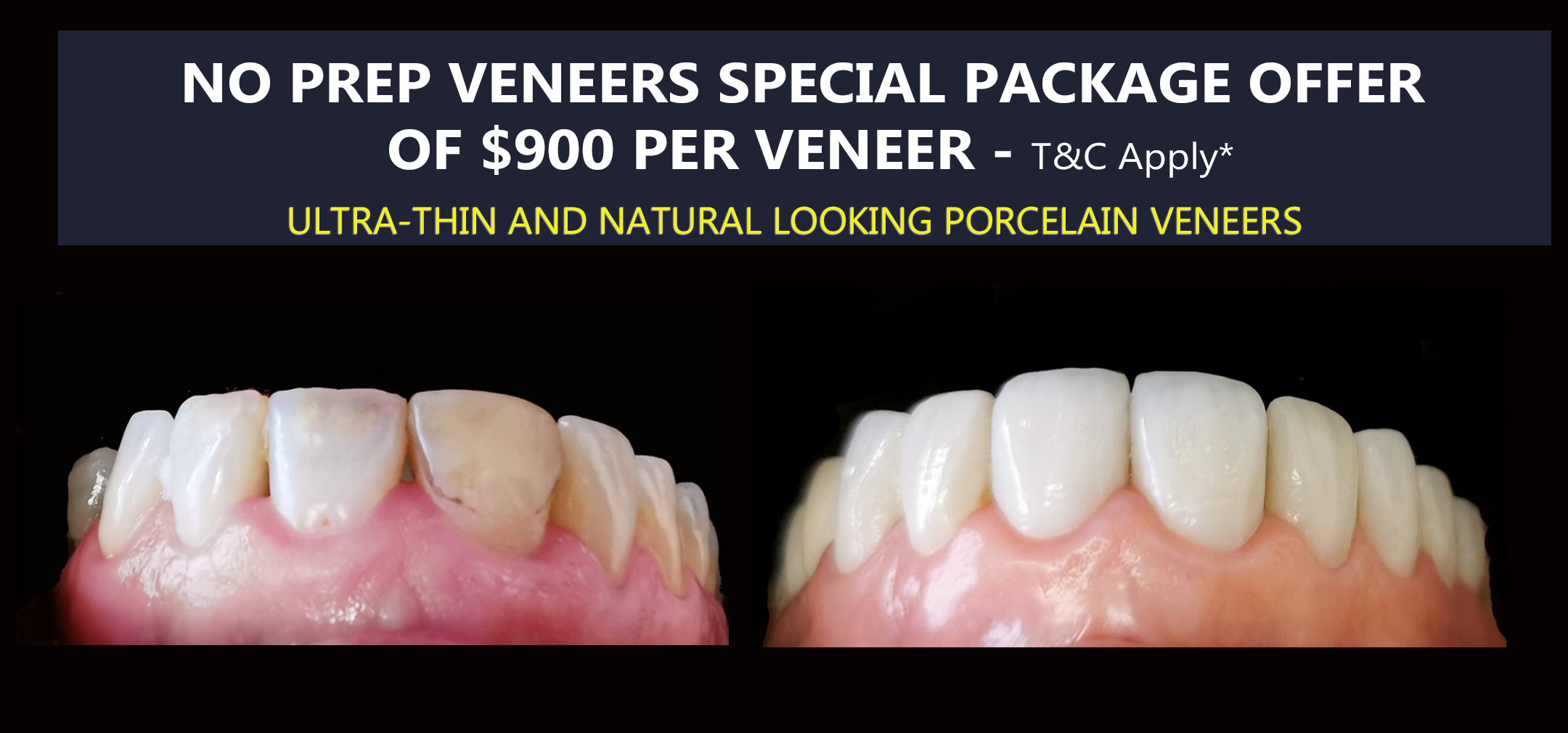Introduction to Fast Crooked Teeth Correction
Crooked teeth can significantly impact your confidence and overall quality of life, affecting everything from your professional interactions to your personal relationships. Traditional orthodontic treatments, while highly effective, often require months or even years to achieve desired results. For those seeking immediate transformation, the ability to Fix Crooked Teeth Fast with Composite Bonding offers an revolutionary alternative that can dramatically improve your smile in just a single dental visit.
Composite bonding represents a breakthrough in cosmetic dentistry, providing patients with a non-invasive, affordable, and incredibly fast solution for addressing various dental imperfections, including crooked, misaligned, and irregularly shaped teeth. This innovative treatment utilizes advanced tooth-colored composite resin materials that are carefully sculpted and bonded directly to your natural teeth, creating the appearance of perfectly aligned, beautifully shaped teeth without the need for lengthy orthodontic procedures.
The growing popularity of composite bonding for crooked teeth correction stems from its unique combination of immediate results, minimal invasiveness, and cost-effectiveness. Unlike traditional braces or clear aligners that gradually move teeth into proper position over extended periods, composite bonding works by strategically adding material to specific areas of your teeth, effectively reshaping and recontouring them to create the illusion of perfect alignment.

Review the important terms and conditions that apply to this offer.
Understanding Dental Bonding on Crooked and Crowded Teeth
Dental Bonding on Crooked and Crowded Teeth represents a sophisticated approach to cosmetic smile correction that addresses multiple aesthetic concerns simultaneously. This treatment method is particularly effective for patients with mild to moderate tooth misalignment, gaps between teeth, irregularly shaped teeth, and various forms of dental crowding that create an uneven or unattractive smile appearance.
The science behind Dental Bonding on Crooked and Crowded Teeth involves the strategic application of composite resin material to specific tooth surfaces, effectively building up areas that are recessed or creating smooth transitions between teeth of different heights or angles. This technique allows skilled cosmetic dentists to create the visual impression of straight, evenly aligned teeth without actually moving the natural tooth positions.
Crowded teeth present unique challenges that composite bonding can effectively address through careful treatment planning and precise application techniques. When teeth are crowded, they often overlap, twist, or angle in ways that create shadow lines and irregular contours that detract from smile aesthetics. By strategically adding composite material to specific surfaces and carefully contouring the final result, dentists can minimize the appearance of crowding and create a more harmonious, balanced smile.
The versatility of Dental Bonding on Crooked and Crowded Teeth extends to addressing various types of misalignment issues, including rotated teeth, teeth that are positioned too far forward or backward, teeth of uneven lengths, and teeth with irregular shapes that contribute to an overall crooked appearance. Each case requires individualized treatment planning to determine the optimal approach for achieving the most natural-looking and aesthetically pleasing results.
The Science Behind Composite Bonding for Crooked Teeth
The ability to Fix Crooked Teeth Fast with Composite Bonding relies on advanced dental materials science and precise application techniques that have been refined over decades of cosmetic dentistry evolution. Modern composite resins are sophisticated materials that combine fine glass particles, ceramic fillers, and polymer matrices to create substances that closely mimic the optical and physical properties of natural tooth enamel.
The bonding process begins with careful tooth surface preparation, which involves lightly etching the enamel to create microscopic irregularities that enhance the mechanical bond between the composite material and the natural tooth structure. This etching process is followed by the application of specialized bonding agents that create chemical adhesion at the molecular level, ensuring long-lasting attachment of the composite material.
Light-curing technology plays a crucial role in the composite bonding process, utilizing high-intensity LED or halogen lights that activate photoinitiators within the composite material. These photoinitiators trigger a polymerization reaction that transforms the initially soft, moldable composite resin into a hard, durable material that can withstand the forces of normal chewing and speaking activities.
The layering technique used in composite bonding allows dentists to build up tooth structure gradually, creating natural-looking contours and surface textures that blend seamlessly with existing tooth structure. This approach enables precise control over the final shape and appearance of each treated tooth, allowing for customized correction of individual alignment issues while maintaining overall smile harmony.
Color-matching technology ensures that composite materials blend invisibly with natural teeth, utilizing sophisticated shade-matching systems and multiple translucency levels to recreate the complex optical properties of natural enamel. This attention to color and translucency matching is essential for achieving results that look completely natural and undetectable.
Ideal Candidates for Fast Crooked Teeth Correction
Patients seeking to Fix Crooked Teeth Fast with Composite Bonding must meet certain criteria to ensure optimal treatment outcomes and long-term satisfaction. Ideal candidates typically have mild to moderate tooth misalignment issues that can be effectively addressed through strategic composite addition rather than actual tooth movement.
Individuals with healthy teeth and gums are the best candidates for composite bonding procedures, as the treatment requires a solid foundation of natural tooth structure to support the bonded material. Patients with untreated decay, active gum disease, or significant structural tooth damage may need to address these issues before composite bonding can be successfully performed.
The severity of tooth misalignment plays a crucial role in determining candidacy for composite bonding. Patients with minor rotations, slight overlapping, small gaps, or teeth that are minimally out of alignment typically achieve excellent results with this treatment approach. More severe misalignment issues may require traditional orthodontic treatment or a combination of orthodontics and composite bonding for optimal results.
Age considerations are important when evaluating candidates for Dental Bonding on Crooked and Crowded Teeth. Young adults and mature teenagers whose teeth have fully erupted are often excellent candidates, as their teeth have reached their final positions and their facial growth is essentially complete. Adult patients of all ages can benefit from composite bonding, provided they have realistic expectations about treatment outcomes and limitations.
Lifestyle factors also influence treatment success, with patients who maintain excellent oral hygiene, avoid harmful habits like nail biting or ice chewing, and follow post-treatment care instructions typically experiencing the best long-term results. Patients who grind or clench their teeth may need additional protective measures, such as night guards, to prevent damage to bonded teeth.
Financial considerations make composite bonding an attractive option for many patients, as the treatment is significantly more affordable than comprehensive orthodontic treatment or porcelain veneer placement. This cost-effectiveness allows patients to achieve dramatic smile improvements without the substantial financial investment required for other cosmetic dental procedures.
The Complete Composite Bonding Procedure
The process to Fix Crooked Teeth Fast with Composite Bonding typically begins with a comprehensive consultation and examination, during which your dentist will evaluate your teeth, discuss your aesthetic goals, and determine whether composite bonding is the most appropriate treatment option for your specific situation. This initial assessment includes photographs, digital imaging, and detailed treatment planning to ensure optimal results.
Treatment planning involves careful analysis of your existing bite relationship, tooth positions, and facial proportions to design a treatment approach that will create the most natural and harmonious results. Your dentist will discuss the expected outcomes, potential limitations, and aftercare requirements to ensure you have realistic expectations about the treatment process and final results.
The actual bonding procedure begins with minimal tooth preparation, which typically involves light surface roughening and the application of conditioning agents to optimize bonding conditions. Unlike traditional veneers that require significant tooth reduction, composite bonding preserves most of your natural tooth structure while still achieving dramatic aesthetic improvements.
Isolation and moisture control are critical aspects of the bonding process, with your dentist using specialized techniques to keep the treatment area completely dry during composite application. Any contamination from saliva or other fluids can compromise the bond strength and longevity of the final restoration.
Color selection and shade matching involve careful evaluation of your natural teeth under various lighting conditions to ensure that the composite material blends seamlessly with your existing tooth color. Multiple shades and translucency levels may be used to recreate the complex optical properties of natural teeth.
The composite application process involves building up the material in thin layers, allowing your dentist to gradually create the desired tooth shape and contour. Each layer is carefully sculpted and shaped before being light-cured to harden the material and prepare for the next layer application.
Contouring and shaping require artistic skill and technical precision, as your dentist uses specialized instruments to create natural-looking tooth anatomy, including proper surface textures, contact points, and transition lines between treated and natural teeth. This phase of treatment is crucial for achieving results that look completely natural and feel comfortable.
Final polishing and finishing involve multiple steps using progressively finer polishing compounds and instruments to create smooth surfaces with natural-looking luster. Proper polishing is essential for both aesthetics and longevity, as smooth surfaces resist staining and bacterial accumulation better than rough surfaces.
Advantages of Composite Bonding Over Traditional Orthodontics
The ability to Fix Crooked Teeth Fast with Composite Bonding offers numerous advantages over traditional orthodontic approaches, making it an increasingly popular choice for patients seeking immediate smile transformation. The most significant advantage is the dramatic reduction in treatment time, with most composite bonding procedures completed in 1-3 hours compared to 18-36 months typically required for traditional braces or clear aligner therapy.
Cost-effectiveness represents another major advantage, with composite bonding typically costing a fraction of the expense associated with comprehensive orthodontic treatment. This affordability makes smile correction accessible to a much broader range of patients who might otherwise be unable to afford traditional orthodontic care.
The non-invasive nature of composite bonding appeals to many patients who are hesitant about the discomfort and lifestyle disruptions associated with traditional braces. Composite bonding requires no painful tooth movement, no dietary restrictions, and no ongoing adjustment appointments that can interfere with work and personal schedules.
Immediate results provide instant gratification that is impossible with traditional orthodontic approaches. Patients can see their transformed smile immediately after treatment completion, allowing them to enjoy improved confidence and aesthetics without waiting months or years for gradual improvements.
Reversibility offers peace of mind for patients who are concerned about making permanent changes to their teeth. Unlike orthodontic treatment that permanently moves teeth into new positions, composite bonding can be removed or modified without permanent damage to natural tooth structure.
The ability to address multiple cosmetic concerns simultaneously is another significant advantage of composite bonding. In addition to correcting the appearance of crooked teeth, the treatment can simultaneously address issues such as tooth discoloration, minor chips, gaps, and irregular shapes, providing comprehensive smile enhancement in a single treatment session.
Treatment Planning and Smile Design
Successful Dental Bonding on Crooked and Crowded Teeth requires meticulous treatment planning and smile design to ensure that the final results are both aesthetically pleasing and functionally appropriate. Modern cosmetic dentistry utilizes advanced digital technology and artistic principles to create customized treatment plans that address each patient’s unique needs and aesthetic goals.
Digital smile design software allows dentists to create virtual representations of proposed treatment outcomes, helping patients visualize potential results before treatment begins. This technology enables precise planning of tooth proportions, shapes, and positions to create the most harmonious and natural-looking results possible.
Facial analysis plays a crucial role in treatment planning, with dentists evaluating factors such as lip position, facial symmetry, and overall facial proportions to ensure that the new smile complements the patient’s existing facial features. The goal is to create a smile that enhances natural beauty rather than appearing artificial or overdone.
Bite analysis and functional considerations are essential components of treatment planning, ensuring that the final results not only look beautiful but also function properly during normal activities such as chewing and speaking. Improper bite relationships can lead to premature wear, discomfort, and long-term complications.
Color and translucency planning involves careful evaluation of the patient’s natural tooth color and the selection of appropriate composite materials to achieve seamless blending and natural appearance. Multiple shades and opacity levels may be used to recreate the complex optical properties of natural teeth.
Proportion and symmetry considerations ensure that treated teeth are appropriately sized and positioned relative to each other and to the patient’s facial features. The golden ratio and other aesthetic principles guide treatment planning to create visually pleasing results that appear natural and balanced.
Mock-up procedures may be performed using temporary materials to allow patients to preview their potential results and provide feedback before final treatment is completed. This approach ensures patient satisfaction and allows for modifications to the treatment plan if necessary.
Managing Different Types of Crooked Teeth
The versatility of composite bonding allows it to address various types of tooth misalignment and irregularities, making it possible to Fix Crooked Teeth Fast with Composite Bonding regardless of the specific nature of the alignment issues. Understanding how different types of crooked teeth can be managed helps patients and dentists develop realistic expectations and optimal treatment approaches.
Rotated teeth present unique challenges that can often be successfully addressed through strategic composite placement. By adding material to specific surfaces and carefully contouring the final result, dentists can create the visual impression of properly oriented teeth without actually rotating the natural tooth position.
Overlapping teeth benefit from composite bonding techniques that smooth out irregular transitions and create more uniform tooth contours. The treatment can minimize the appearance of overlapping by building up recessed areas and creating smoother transitional curves between adjacent teeth.
Protruding teeth can be visually minimized through composite bonding that adds material to adjacent teeth, creating a more uniform arch form and reducing the prominence of individual teeth that extend beyond the normal arch position.
Irregularly sized teeth represent another common issue that responds well to composite bonding treatment. Teeth that are too small can be enlarged to proper proportions, while the appearance of oversized teeth can be minimized through careful color and contour matching with adjacent teeth.
Gapped teeth are excellent candidates for composite bonding, with the treatment able to close small to moderate gaps by adding material to the adjacent tooth surfaces. This approach creates the appearance of properly spaced teeth without the need for orthodontic movement.
Worn or chipped teeth often contribute to an overall crooked appearance, and composite bonding can restore proper tooth length and shape while simultaneously addressing alignment issues. This comprehensive approach provides maximum aesthetic improvement with minimal treatment complexity.
Longevity and Maintenance Considerations
Understanding the expected lifespan and maintenance requirements of composite bonding is essential for patients considering this approach to Fix Crooked Teeth Fast with Composite Bonding. While composite bonding provides immediate and dramatic results, proper care and maintenance are crucial for maximizing treatment longevity and preserving aesthetic outcomes.
Average lifespan expectations for Dental Bonding on Crooked and Crowded Teeth typically range from 5-10 years, depending on various factors including the patient’s oral hygiene habits, dietary choices, bite forces, and the specific location and extent of the bonding work. Front teeth generally experience less stress than back teeth, potentially leading to longer-lasting results.
Proper oral hygiene becomes even more important after composite bonding treatment, as the junction between natural tooth structure and composite material can potentially harbor bacteria if not properly maintained. Regular brushing with non-abrasive toothpaste, daily flossing, and routine professional cleanings are essential for preventing complications.
Dietary considerations play a significant role in maintaining bonded teeth, with patients advised to avoid extremely hard foods that could chip or fracture the composite material. Foods such as ice, hard candies, nuts, and tough meats should be consumed with caution, and habits such as nail biting or pen chewing should be eliminated.
Staining prevention requires ongoing attention, as composite materials can gradually absorb stains from coffee, tea, wine, and other deeply pigmented substances. While modern composite materials are more stain-resistant than earlier formulations, they are still more susceptible to discoloration than natural enamel or porcelain.
Regular dental checkups allow for early detection and treatment of any issues that may develop with bonded teeth. Small chips or rough areas can often be easily repaired during routine visits, preventing minor problems from developing into more significant complications requiring extensive treatment.
Professional maintenance may include periodic polishing and refinishing to maintain optimal appearance and surface smoothness. These procedures help remove surface stains and restore the natural luster of the composite material, extending the aesthetic lifespan of the treatment.
Combining Composite Bonding with Other Treatments
Many patients seeking to Fix Crooked Teeth Fast with Composite Bonding can benefit from combining this treatment with other cosmetic dental procedures to achieve comprehensive smile transformation. Strategic treatment combinations can address multiple aesthetic concerns simultaneously while maintaining cost-effectiveness and minimizing treatment time.
Teeth whitening often complements composite bonding beautifully, with professional whitening performed before bonding to ensure that the composite material is matched to the desired final tooth color. This combination allows patients to achieve both straighter-looking and whiter teeth in a coordinated treatment approach.
Minor orthodontic treatment may be recommended for patients with more complex alignment issues, with limited orthodontic movement used to improve tooth positions before composite bonding is applied to refine the final aesthetic results. This hybrid approach can achieve superior outcomes compared to either treatment alone.
Gum contouring procedures can enhance the results of Dental Bonding on Crooked and Crowded Teeth by creating more uniform gum lines and improving the overall proportions of teeth relative to gum tissue. This combination is particularly effective for patients with uneven gum levels or excessive gum display.
Enamel microabrasion may be recommended for patients with surface stains or minor enamel irregularities that could interfere with optimal bonding results. This minimally invasive procedure removes superficial enamel defects and creates a more uniform surface for composite bonding.
Crown lengthening surgery might be necessary for patients with severely worn teeth or excessive gum coverage that prevents optimal composite bonding results. This procedure exposes more tooth structure and creates better proportions for aesthetic treatment.
Bite adjustment procedures ensure that bonded teeth function properly within the patient’s existing bite relationship, preventing premature wear or damage to the composite material while maintaining comfortable function.
Cost Considerations and Payment Options
The affordability of composite bonding represents one of its most attractive features for patients seeking to Fix Crooked Teeth Fast with Composite Bonding without the substantial financial investment required for traditional orthodontic treatment or extensive cosmetic dentistry procedures.
Treatment cost variables include the number of teeth being treated, the complexity of the alignment issues being addressed, the geographic location of the dental practice, and the experience level of the treating dentist. Most patients find that composite bonding costs significantly less than alternative treatments while still providing excellent aesthetic results.
Insurance coverage for cosmetic composite bonding is typically limited, as most dental insurance plans classify the treatment as elective rather than medically necessary. However, if the treatment addresses functional issues in addition to aesthetic concerns, some insurance benefits may apply.
Payment plan options are available at many dental practices, allowing patients to spread treatment costs over several months with little or no interest charges. These flexible payment arrangements make composite bonding accessible to patients who might not be able to afford the full treatment cost upfront.
Value comparison with alternative treatments demonstrates the cost-effectiveness of composite bonding, with the treatment typically costing 60-80% less than porcelain veneers and 70-90% less than comprehensive orthodontic treatment while still providing significant aesthetic improvements.
Long-term cost considerations include the potential need for periodic maintenance and eventual replacement of bonded areas, though these ongoing costs are typically much lower than the initial investment in traditional orthodontic treatment or extensive cosmetic dentistry.
Promotional offers and seasonal specials are common in cosmetic dentistry, potentially reducing the cost of composite bonding during certain periods. Patients should inquire about available discounts or package deals that might make treatment more affordable.
Addressing Common Concerns and Limitations
While composite bonding offers excellent results for appropriate candidates, patients considering this approach to Fix Crooked Teeth Fast with Composite Bonding should understand the potential limitations and address any concerns with their treating dentist.
Durability concerns are often raised by patients who worry about the longevity of composite materials compared to natural teeth or porcelain restorations. While composite bonding is not as durable as some alternatives, proper care and maintenance can ensure excellent longevity for most patients.
Aesthetic limitations exist for patients with severe alignment issues or complex bite problems that cannot be adequately addressed through composite addition alone. In these cases, traditional orthodontic treatment or more extensive cosmetic procedures may be necessary to achieve optimal results.
Staining susceptibility remains a concern for some patients, particularly those who consume large quantities of coffee, tea, wine, or other staining substances. While modern composite materials are more stain-resistant than earlier formulations, some discoloration may occur over time.
Repair requirements may be more frequent compared to other cosmetic treatments, though the ability to perform chairside repairs often makes this a minor inconvenience rather than a major drawback. Most repairs can be completed quickly and affordably during routine dental visits.
Bite considerations must be carefully evaluated, as adding composite material to teeth can potentially alter bite relationships and cause discomfort or premature wear if not properly planned and executed. Experienced cosmetic dentists can minimize these risks through careful treatment planning.
Realistic expectations are crucial for patient satisfaction, with patients needing to understand that composite bonding creates the appearance of straight teeth rather than actually straightening crooked teeth. While the results can be dramatic, they may not achieve the same outcomes as actual orthodontic tooth movement.
Success Stories and Patient Transformations
The dramatic results possible with Dental Bonding on Crooked and Crowded Teeth are best illustrated through real patient success stories that demonstrate the transformative power of this innovative treatment approach.
Professional transformation cases often involve patients whose careers require confident public speaking or frequent interpersonal interactions. Many patients report significant improvements in their professional confidence and advancement opportunities following composite bonding treatment for crooked teeth.
Social confidence improvements are commonly reported by patients who previously avoided smiling or felt self-conscious about their teeth in social situations. The immediate results of composite bonding allow patients to enjoy improved self-esteem and social interactions immediately after treatment.
Special occasion transformations represent another common success category, with patients seeking rapid smile improvement for weddings, graduations, job interviews, or other important life events. The ability to Fix Crooked Teeth Fast with Composite Bonding makes these time-sensitive transformations possible.
Age-related success stories span all demographics, from young adults seeking smile improvement before entering the workforce to mature patients who want to improve their appearance for retirement activities or new relationships. Composite bonding provides effective results regardless of patient age.
Complex case solutions demonstrate how creative treatment planning and skilled execution can address challenging alignment issues through composite bonding, often achieving results that patients thought would require extensive orthodontic treatment.
Long-term satisfaction rates remain high among patients who maintain realistic expectations and follow proper aftercare instructions, with many patients reporting continued satisfaction with their results years after initial treatment.




